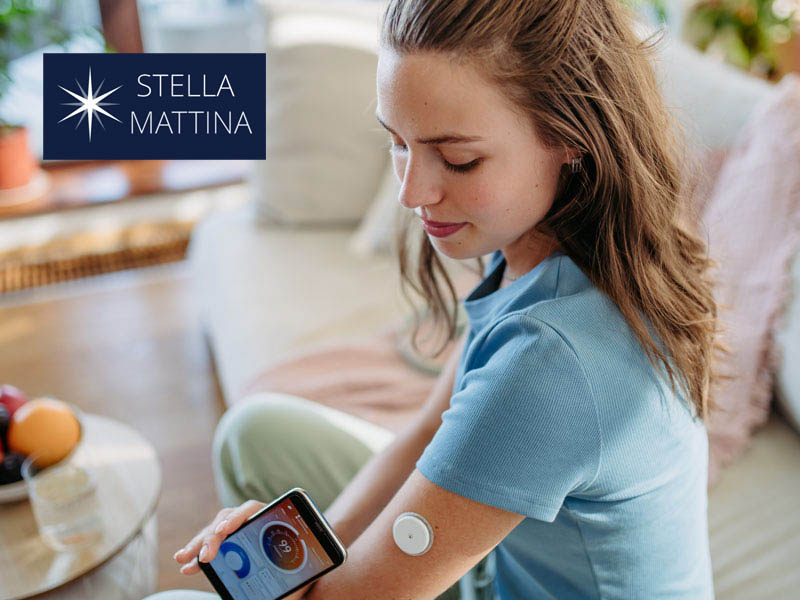
A diagnosis of type 2 diabetes can feel daunting. It’s a challenging, chronic condition – but recent advances in healthcare suggest that with the right tools and mindset, it’s possible to manage and even reverse type 2 diabetes – putting it “into remission.”
This article will look at type 2 diabetes reversal strategies, including dietary adjustments and exercises that support insulin sensitivity.
If you have pre-diabetes or a diabetes diagnosis, you’ll find plenty of helpful information here. Our doctors are well versed in the topic and can help you with a plan to manage the condition.
Understanding Type 2 Diabetes
We’re here to empower you so you understand what’s happening inside your body. In a situation where you have pre-diabetes (slightly too-high blood sugar levels) or diabetes (permanently too-high levels), your body struggles to use insulin effectively.
Insulin is one of the hormones that’s essential for moving sugar from your bloodstream into your cells for energy. After a meal, it works to control your sugar levels. When it doesn’t work effectively, we call it “insulin resistance” – which causes your blood sugar levels to rise for longer than they normally would.
This increase – over time – can lead to further symptoms that eventually have undesirable medical outcomes. However, if you can find a way to improve how your body responds to insulin, with or without medication, it’s possible to bring your blood sugar levels back to a healthier range and reduce the risk of those complications.
Can You Reverse Type 2 Diabetes?
For some individuals, yes, it’s possible to reverse type 2 diabetes. Reversal means that blood sugar levels remain within a healthy range.
The term “reversal” can be a bit misleading. It’s difficult to remedy the situation completely, but lifestyle changes with or without medication can certainly improve blood sugar levels. However, you’ll still need to constantly manage your underlying lifestyle factors to maintain this.
Activity and diet are two lifestyle factors that help lower your blood sugar levels.
How Exercise Helps Reverse Type 2 Diabetes
Exercise isn’t just about staying fit; it’s a powerful tool for managing and potentially reversing type 2 diabetes by improving your insulin sensitivity. Physical activity helps muscles absorb glucose for energy, which can lower blood sugar.
The best exercises for insulin resistance combine aerobic activities – such as walking, swimming, or cycling – and resistance training, like weightlifting or bodyweight exercises. Aerobic exercises get your heart pumping and help your body use glucose as fuel, while resistance training builds muscle. However, the “best” type of exercise will differ among individuals.
Muscle tissue uses glucose efficiently, so by building more muscle, you’re essentially giving your body a boost in glucose management, although effect size varies – and other factors come into play as well.
A well-rounded exercise routine can therefore help stabilize blood sugar levels and contribute to an overall improvement in your diabetes management.
How Much Does Blood Sugar Drop After Exercise?
The drop in blood sugar following exercise varies based on several factors, including the type, intensity, and duration of the activity and when it’s performed relative to meals.
Exercise encourages your muscles to absorb glucose for energy, which can continue well after the workout as muscles replenish their energy stores.
For many, this means blood sugar levels may remain lower for several hours post-exercise depending on intensity, duration, and your metabolic response. By choosing a balanced exercise routine and monitoring your body’s responses, you can take advantage of physical activity to manage blood sugar levels.
Nutrition and Diet in Managing Type 2 Diabetes
Managing type 2 diabetes requires a balanced diet. And this applies to snacks, too! The best snacks for patients living with diabetes are low in carbohydrates, high in fiber, and contain either protein or healthy fats to stabilize blood sugar:
Nuts and seeds (almonds, walnuts, and chia seeds) are high in fiber and healthy fats, which makes them great snacks.
Greek yogurt with berries offers protein, probiotics, fiber, and antioxidants, which support digestive health and prevent sugar spikes.
Vegetables with hummus: Bell peppers, cucumbers, and carrots are low in carbohydrates and high in fiber, while hummus adds protein and healthy fats. Broccoli, spinach, and cabbage are low-carb veggies to fill up on.
Apple slices with peanut butter: Apples provide natural sweetness and fiber, while peanut butter (without additives!) adds healthy fats and protein to help manage blood sugar levels.
Tips for Maintaining a Diabetes-Friendly Diet
- Keep portion sizes in check to prevent overeating and reduce the risk of blood sugar spikes.
- Focus on foods high in fiber (whole grains, fruits, vegetables) that slow down the release of glucose into the bloodstream.
- Include healthy fats (avocado, olive oil, fatty fish) for improving heart health and insulin sensitivity.
- Drink water regularly to help your kidneys flush out excess blood sugar, prevent dehydration, and reduce blood sugar levels.
Monitoring Blood Sugar and Tracking Progress
Keeping a blood glucose log can be a helpful tool for understanding how different foods, activities, and medications impact blood sugar. You can easily buy a glucose monitor these days or your doctor can prescribe one for you. If you have diabetes, your insurance may cover a continuous glucose monitor, which you place on your arm to monitor your blood sugar. This decreases the need to check with a finger-stick and improves your overall quality of life.
In your basic blood glucose log, aim to:
- Track blood sugar in the morning on an empty stomach and then throughout the day, before and after meals.
- Record each blood sugar reading.
- Make notes on meals, exercise, and medications.
Emotional and Mental Well-Being in Managing Diabetes
Managing a chronic condition like type 2 diabetes can have an impact on your mental health. Feelings of stress, anxiety, or burnout are common, and addressing these emotional challenges is essential for your overall well-being.
Support groups: Find a local diabetes support group or online community that can offer emotional support, motivation, and advice to help reverse type 2 diabetes.
Positive role models: Several celebrities with type 2 diabetes, such as Tom Hanks and Larry King, have openly discussed their challenges and successes in managing their condition. If they can, you can!
Counseling: If you’re struggling with anxiety, depression, or stress related to your diagnosis, a mental health professional can provide tools to manage these emotions.
The Role of Nursing Diagnosis in Type 2 Diabetes Management
A nursing diagnosis of type 2 diabetes is more than a medical term – it’s the foundation of personalized care. Assessing your specific health needs helps nurses understand how to support you in blood sugar management, meal planning, and overall self-care. Through this diagnosis, healthcare providers create a care plan tailored to your lifestyle and health goals, and set realistic steps toward improvement.
Stella Mattina Can Help You Reverse Type 2 Diabetes
If you’re looking online for a “diabetes specialist near me” to help you put your diabetes into remission, everyone at Stella Mattina is on your side. We’ll provide support to help you navigate lifestyle adjustments, medication options, and effective self-care. Preventing chronic illness is our passion.
Make an appointment at one of our locations and let’s talk!
Dr. Krum is currently in practice in Arlington, TX. He received his undergraduate degree at Texas A&M University, then attended UTMB Galveston for medical school, finishing in 1986, completing his residency there in 1990. Providing a full range of obstetrical and gynecological care, he specializes in the treatment of endometriosis and robotic surgery. He arranges his schedule so that same-day appointments are usually available.
